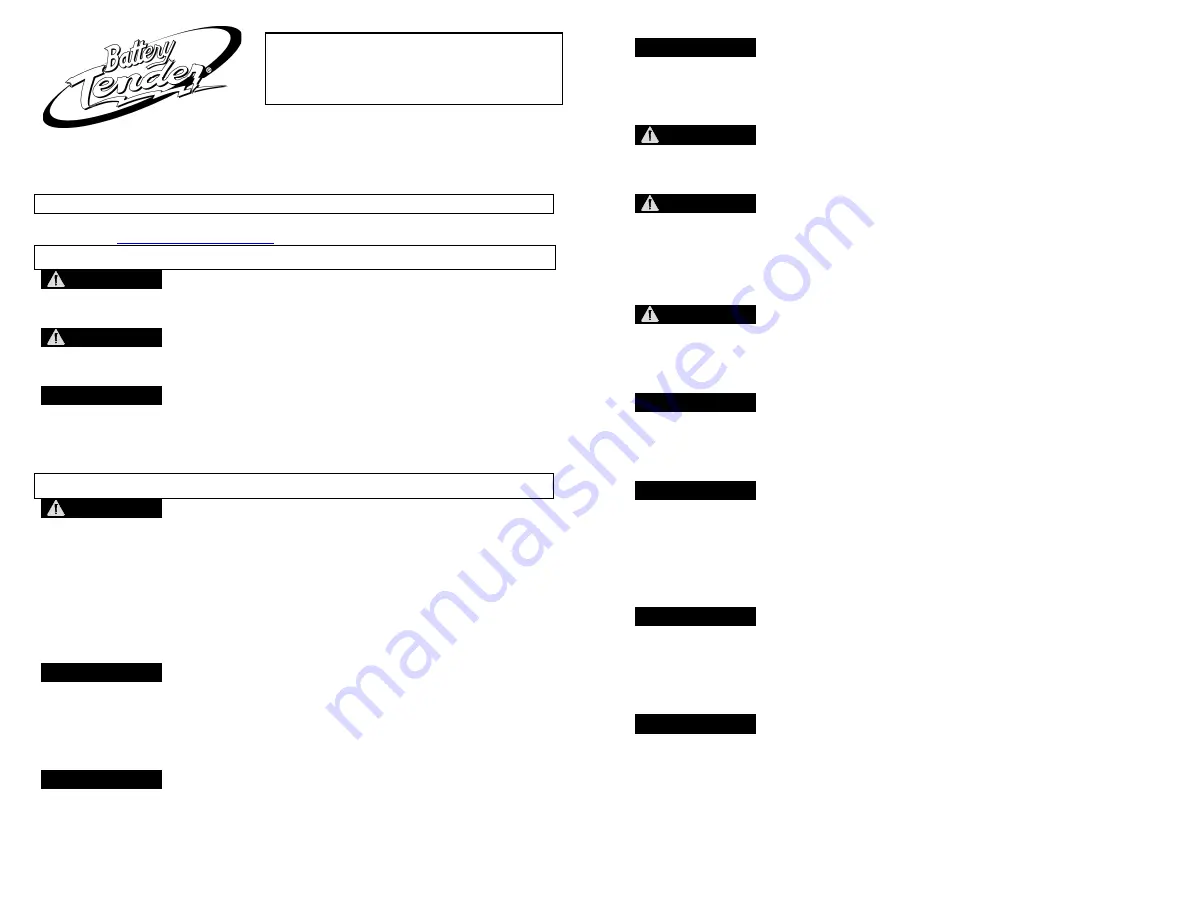
1 P/N 392-0215-RE
IMPORTANT SAFETY INSTRUCTIONS
CAREFULLY READ AND
SAVE THESE INSTRUCTIONS
DOWNLOAD MANUAL
This manual can be read or downloaded from the BATTERY TENDER®
website @
www.batterytender.com
WARNING AND CAUTION LABEL DEFINITIONS:
WARNING
WARNING indicates a potentially hazardous situation which, if not
avoided, could result in serious injury or death.
CAUTION
CAUTION indicates a potentially hazardous situation which, if not
avoided, may result in minor or moderate injury.
CAUTION
CAUTION used without the safety alert symbol indicates a
potentially hazardous situation, which if not avoided, may result
in property damage.
GENERAL PRECAUTIONS
WARNING
Always charge the battery in a well ventilated area. Explosive
hydrogen gas may escape from the battery during charging. Keep
open flames, electrical sparks and smoking materials away from
the battery at all times. Failure to do so could result in serious
injury or death.
NOTE :
Gas hot water heaters are a source of open flame to be avoided.
CAUTION
Locate the charger as far away from the battery as is allowed by
the length of the output cable harness. NEVER
set the charger
above or below the battery. Gasses or fluids from the battery may
corrode and damage the charger.
CAUTION
Do not set the charger on a combustible surface. Locate in a well
ventilated area to dissipate heat generated by the charger.
Portable Battery Chargers
Designed for six cell lead-acid batteries
2
CAUTION
NEVER use a battery charger unless the battery voltage matches
the output voltage rating of the charger. For example, do not use
a 12-volt charger with a 6-volt battery and vice versa.
WARNING
Do not expose the charger to rain or snow to avoid risk of electric
shock or fire.
WARNING
Do not use attachments or accessories that are not recommended
or sold by the battery charger manufacturer. Doing so may cause
electric shock, fire, or other unforeseen situations resulting in
serious injury or death.
CAUTION
When handling electric power cords, always pull by the plug
rather than by the cord. This reduces the risk of damage to both
the plug and cord, and minimizes the likelihood of electric shock.
CAUTION
Make sure all electric power cords are located so that they cannot
be stepped on, tripped over, or otherwise subjected to damage or
stress.
CAUTION
Study all of the battery manufacturer's precautions and specific
recommendations for safe operation such as not removing cell
caps while charging and the recommended rates of charge
(charger output current). This is important to avoid damage to the
battery.
CAUTION
When leaving a battery charger connected to a non-sealed,
flooded battery for extended periods of time (weeks, months,
etc.), periodically check individual cell fluid levels against
manufacturer's recommendations for safe operation.
CAUTION
If the battery releases an excessive amount of gas or if the battery
gets hotter than 130
F (55
C) during charging, disconnect the
charger and allow the battery to cool. Overheating may result in
plate distortion, internal shorting, drying out or other damage.
















